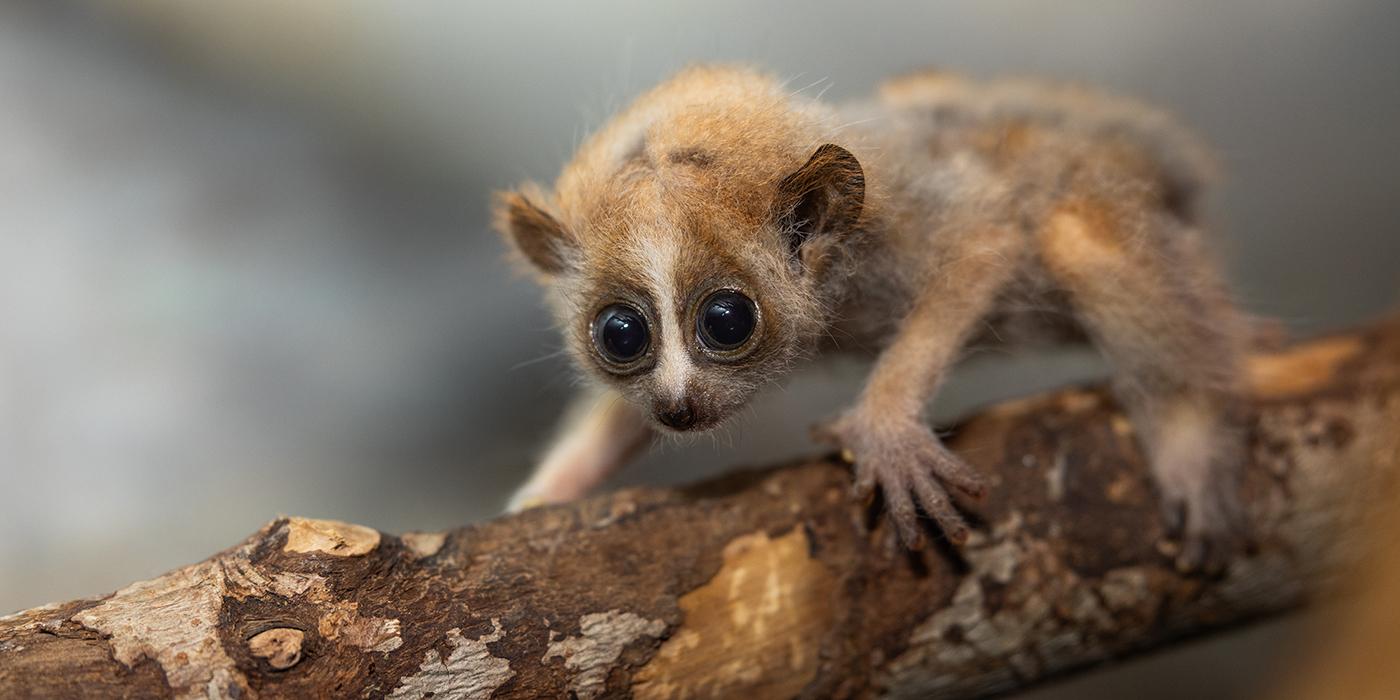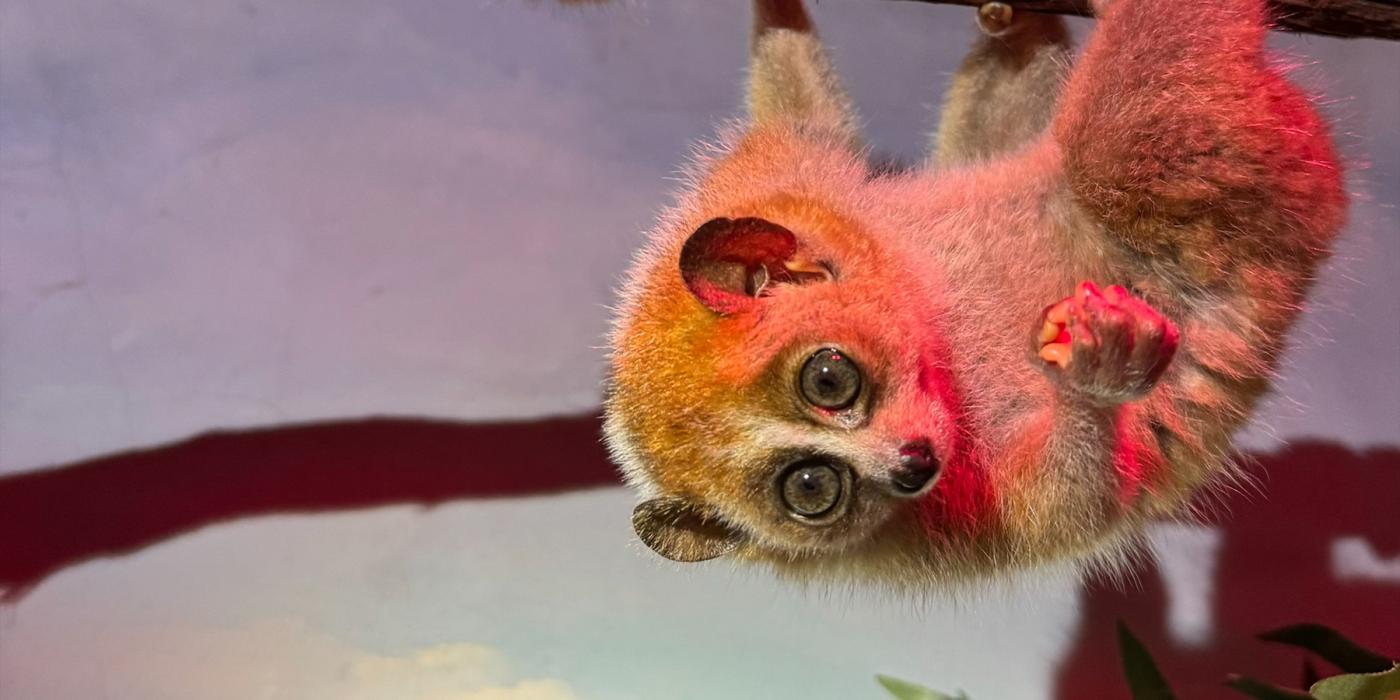New at the Zoo: Pygmy Slow Lorises
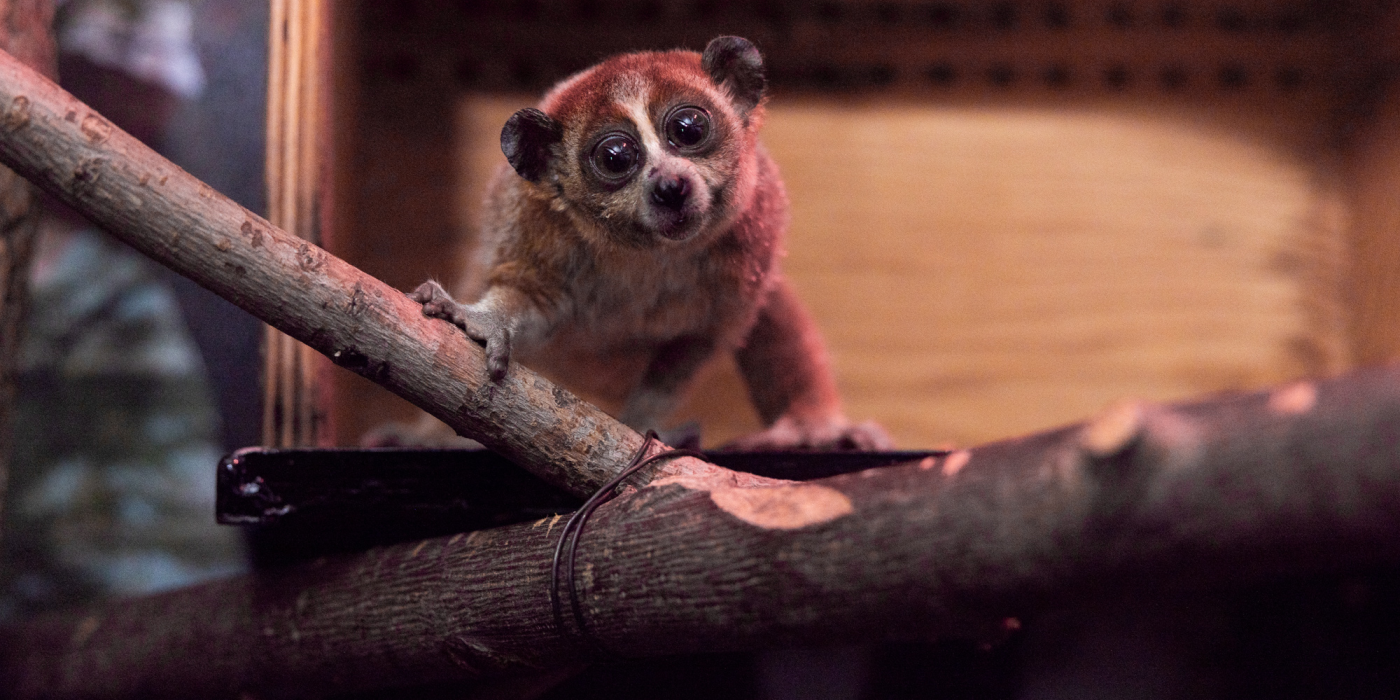
In a darkened, red-lit area of the Small Mammal House, two small, nocturnal primates explore their habitats. Naga and Pabu are the first pygmy slow lorises housed at the Smithsonian’s National Zoo and Conservation Biology Institute. Get the full scoop from keepers Kara Ingraham and Ann Gutowski in this Q+A.
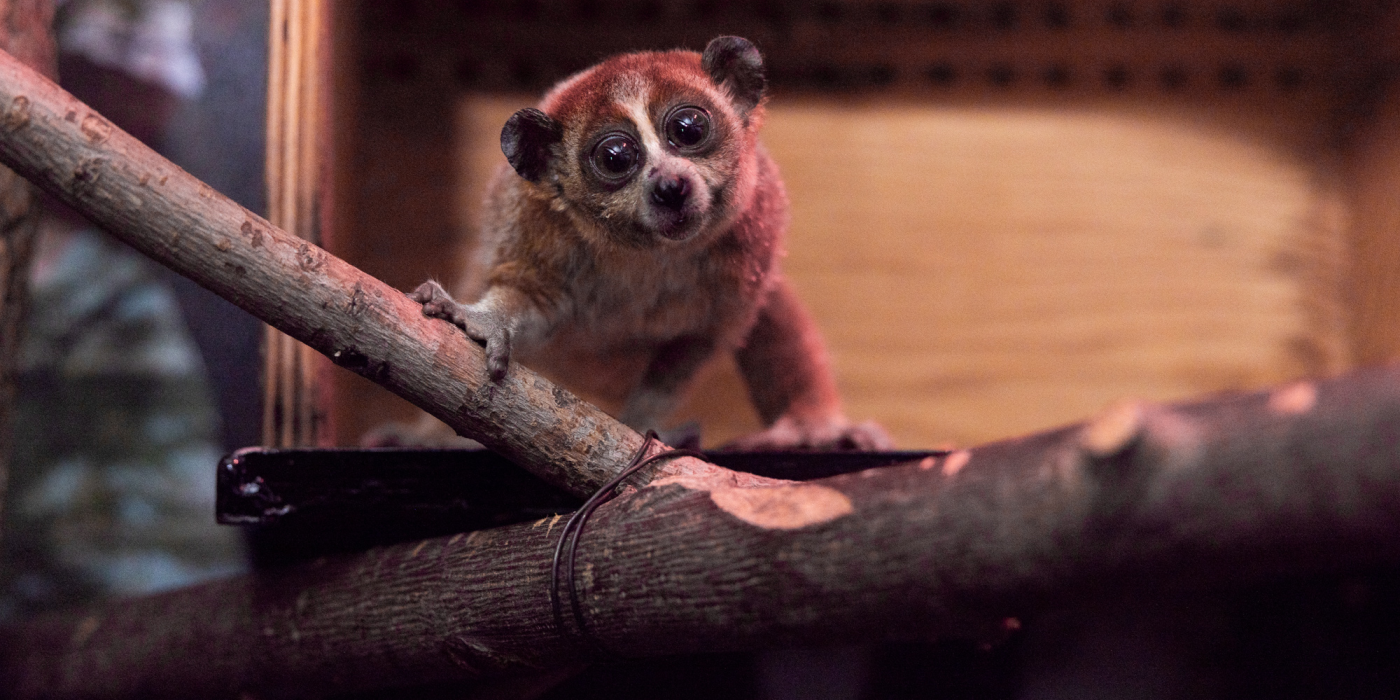
Male pygmy slow loris, Pabu, is 1 year old. He will readily approach keepers for training sessions and feedings.
What are some of your favorite fun facts about pygmy slow lorises?
Pygmy slow lorises are super unique. They are the only known venomous primates! They produce a venom in their brachial glands in their upper arm. Combined with enzymes in their saliva, these primates can produce a painful bite, allergic reaction and a slow-healing wound.
Don’t worry — their venom does not pose a big threat to humans. In fact, wild pygmy slow lorises do not use it against predators because the venom is not fast acting. Instead, these primates use their venom in territorial disputes with other pygmy slow lorises. They also groom themselves with the venom to ward off parasites and warn predators to stay away.
What are Naga and Pabu’s personalities like?
Naga, our 2-year-old female, is more shy and laid-back than our 1-year-old male, Pabu. She will sometimes hang back during enrichment or training sessions but is still inquisitive. She seems to like watching us work. Naga also has gentler demeanor.
Pabu is highly food-motivated. He is more engaged and will readily approach for training sessions and feedings.
What do pygmy slow lorises eat?
Pygmy slow lorises have highly specialized diets that are difficult to replicate under human care. In the wild, between 50 and 70 percent of their diet is tree sap! Their specialized bottom teeth gouge into the bark of trees and cause sap to flow freely. They visit their gouge sites nightly to consume sap. Wild pygmy slow lorises will also eat fruit, insects and small animals.
At the Small Mammal House, Naga and Pabu get primate gel, a small amount of fruit and veggies, insects and gum arabic. The gum is their sap here and they get it every day!
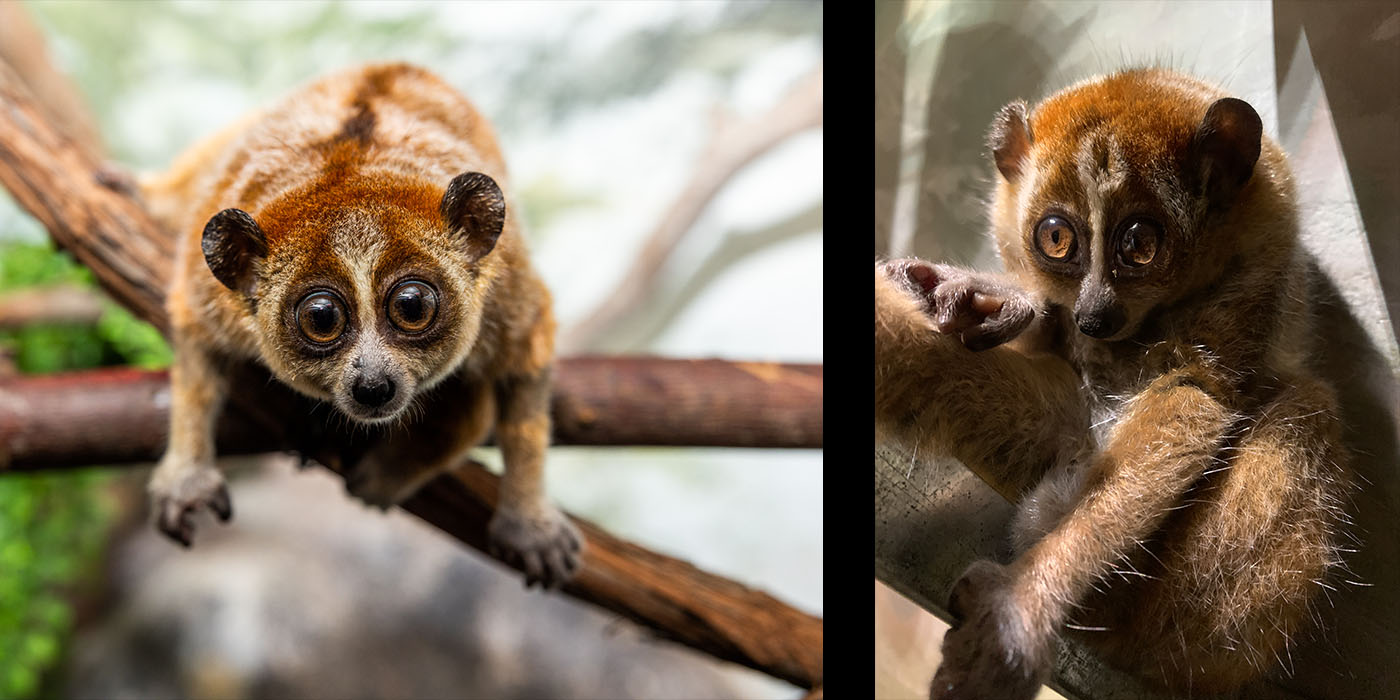
Pabu, left, and Naga, right, are currently living in separate habitats in the Small Mammal House. They have a breeding recommendation from the Pygmy Slow Loris Species Survival Plan (SSP), but Pabu will not be mature enough to breed until next year.
Have Pabu and Naga met?
Not yet! They arrived from different zoos and for now they are living in separate habitats. However, Pabu and Naga have a breeding recommendation from the Pygmy Slow Loris Species Survival Plan (SSP). When females are ready to breed, they make a whistle sound. That’s an easy indication to keepers they are ready for introductions!
However, Pabu will not be mature enough to breed until next year. It’s possible the two could be housed together as companions sooner. Keepers are currently assessing their behavior to determine next steps. Introductions with venomous animals are always tricky. When we do decide to introduce them, we will be taking things very slowly. We will have to closely monitor their interactions, especially around feeding and nesting areas to determine safety and compatibility while they are together.
What do you enjoy most about working with pygmy slow lorises?
We are excited to educate guests about these unique primates. Most importantly, we want folks to understand the conservation impacts we all can have on this species. Pygmy slow lorises are endangered. Their main threat is from the exotic pet trade. They also suffer from habitat loss and fragmentation.
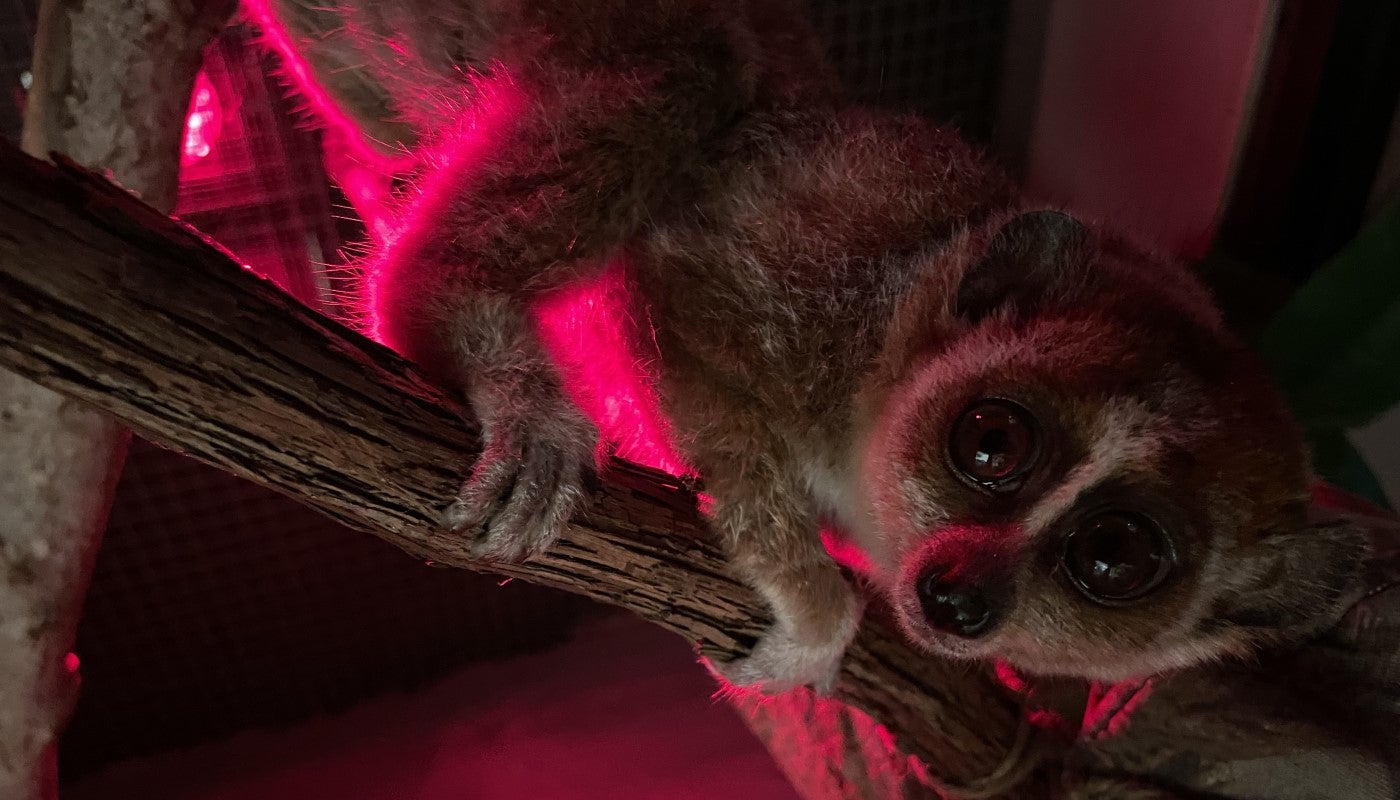
Lorises, including Naga pictured here, are nocturnal, or more active at night. Our exhibits are on a reverse light cycle. The white, daytime lighting is on from 9 p.m. to 9:30 a.m. and the red, nocturnal lights are on from 9:30 a.m. to 9 p.m.
How can visitors help pygmy slow lorises?
Educating yourself and others about the impacts of the illegal pet trade is a great starting point to helping this species! As you’re scrolling through your favorite social media, be critical of content you see.
There are internet videos of lorises being tickled by humans. The animal’s response is to raise its arms up. While this behavior might look cute, the loris is actually exposing its venom glands in an attempt to defend itself. It is not enjoying being tickled.
Liking, sharing and even commenting on “cute” videos of animals in inappropriate situations only increases the likelihood people will want them as pets. But pygmy slow lorises do not make good pets. In addition to their highly specialized diet, they also require unique vet care and a nocturnal habitat. To prevent the extremely painful and venom induced bites, lorises sold into the pet trade often have many teeth removed, which reduces their ability to eat effectively.
Report any videos you see of exotic animals in someone’s home or environment where they cannot exhibit their natural behaviors or seem stressed or uncared for. Do not engage with the content otherwise.
While it can be difficult to spot them in their darkened exhibits, the lorises have been very active and engaging. This is the first time this species has been housed at the Zoo so it is great opportunity to guests to learn about a totally new animal. We have certainly enjoyed learning about them, too!
Stop by the Small Mammal House to see Naga and Pabu on your next visit! For the best chance to see pygmy slow lorises up close, attend daily keeper talks at 10:30 a.m. and 2 p.m. Animals are featured at random. Plan your visit today!
Related Species:

